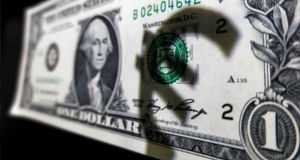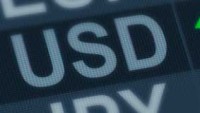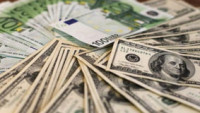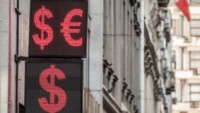 The last two days have seen European markets struggle to build on the gains of last week, with some modest profit taking starting to kick in, even as investors start to price in the prospect of rate cuts as soon as next year.
The last two days have seen European markets struggle to build on the gains of last week, with some modest profit taking starting to kick in, even as investors start to price in the prospect of rate cuts as soon as next year.
In the space of a week, we’ve gone from higher for longer back to rate cuts in 2024, and this time the push back from central bankers isn’t anywhere near as aggressive.
In a way its not hard to understand this sort of shift given the economic data we’re seeing out of Europe; however, the US is a slightly different matter given the greater resilience of the US economy.
Yesterday Bank of England chief economist Huw Pill said that it wasn’t unreasonable to predict rate cuts in the middle of next year, sending UK 2-year gilt yields to their lowest levels since early June, ahead of next week’s October inflation numbers which could see a sizeable slowdown in the headline rate of CPI from 6.7% to somewhere below 5%.
Given the challenges facing the UK economy in the coming months however it’s not too much of a stretch to suggest that a lack of demand might do the central bank’s job for it.
The same argument applies to Europe and the European Central Bank where headline inflation is lower than in the UK and in today’s final German CPI numbers for October is expected to fall from 4.3% to 3%, the lowest level since June 2021.
Looking at the data coming out of Germany the idea that the ECB could hike rates further is for the birds, after industrial production in September collapsed by -1.4%, while the construction sector PMIs have remained below 40 for the second month in a row. That’s not just mild recession territory, it’s worse than that as the economy there tries to adapt to a model without cheap Russian gas.
Based on the economic data the ECB could be forced to start cutting rates as soon as the start of Q2 next year, whether they want to admit it or not, and no amount of ECB speakers today can change how the economy across Europe is deteriorating. Today we get to hear from ECB chief economist Philip Lane, who leans to the dovish side, as well as Pierre Wunsch from Belgium, Germany’s Joachim Nagel both of whom are hawks, as well as Ireland’s Gabriel Makhlouf, and Spain’s Pablo Hernandez De Cos.
We’re also set to hear from Fed chief Jay Powell later today in Washington DC as we look forward to dissecting a whole encyclopaedia of central bank jibber jabber throughout the day.
US markets have been more resilient, making smaller and more incremental gains over the last 2 days, with the Nasdaq 100 pushing up to its highest level in almost 2-months helped by significant declines in the longer end of the yield curve. In the last few days both the 10-year and 30-year yields have seen steep declines, sharply reinverting that end of the curve.
There is a sense that markets in the US might be getting slightly ahead of themselves given concerns over weak global demand after the weak exports data from China prompted a sharp slide in oil prices to their lowest level since July, wiping out all the gains seen since Hamas started its war on Israel. US oil inventories also rose sharply last week by 12m barrels due to API figures released yesterday evening.
Despite the strong US finish last night, markets in Europe look set to open lower, on the back of a weaker Asia session, as the spillover effect of weak Chinese economic data and weak oil demand weighs on sentiment.
EUR/USD – slipped further away from the highs at 1.0760, with resistance beyond that at the 1.0800 area and 200-day SMA, which is likely to be a tough nut to crack. Support likely to come in at the 1.0670 area. Below 1.0520 targets the 1.0450 level.
GBP/USD – the failure at the 200-day SMA at 1.2430 has seen a modest decline towards the 1.2250 area. We could see further weakness towards 1.2180 without negating the current upside momentum. We need to push above 1.2450 to signal further gains.
EUR/GBP – slipped towards the 50-day SMA at 0.8650 before rebounding. This appears to be short term support. We could see a move up to the 0.8720 area but are still on course for move towards the 0.8620 area.
USD/JPY – rebounded off support at the 148.75 area last week, and appear to be set for a revisit of the recent highs and resistance at 151.95. Above 152.20 targets 155.00.












